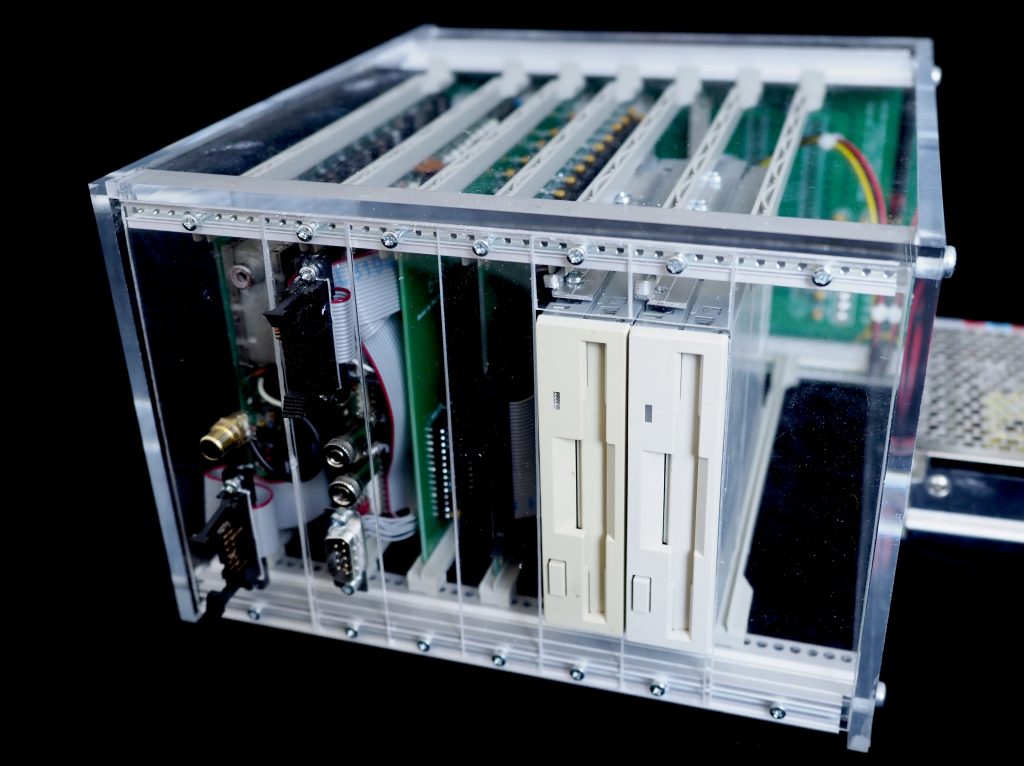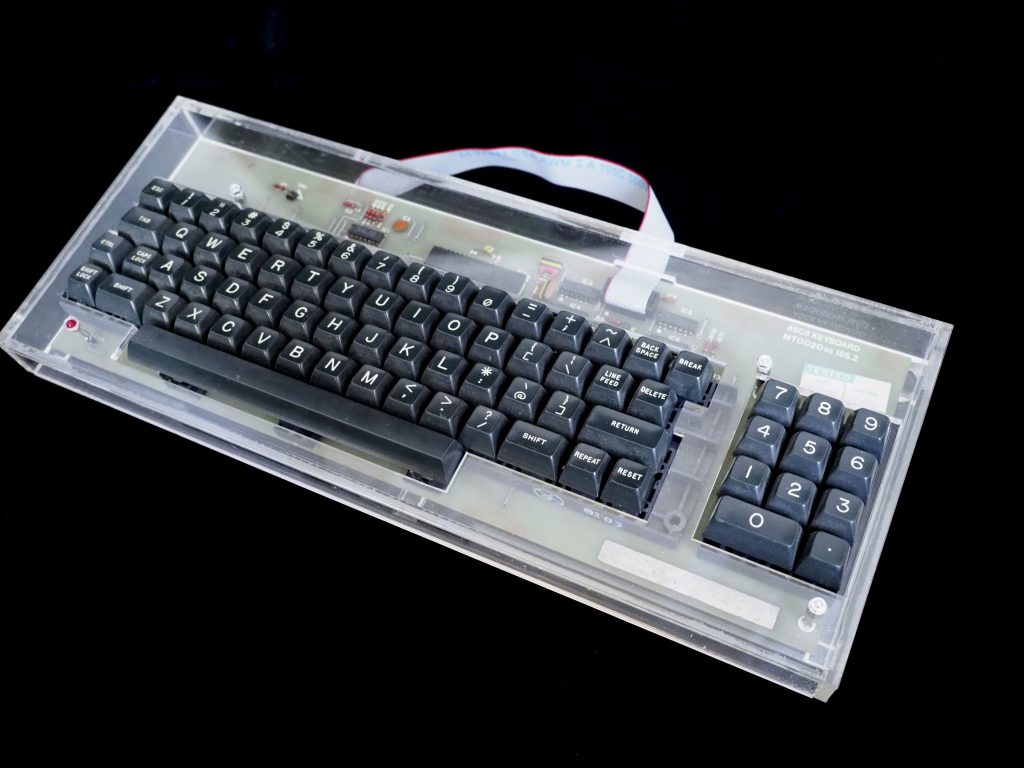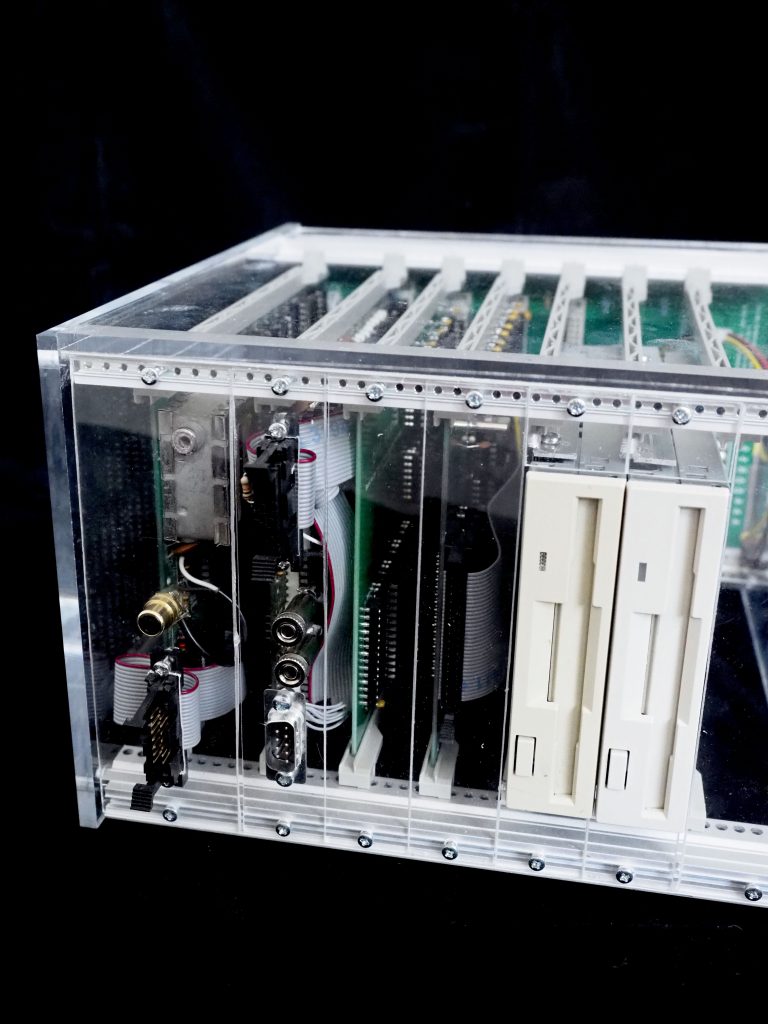When I found my Microtan I found the system board, the TANEX board, the hex keypad and the ASCII keyboard. The mini motherboard has gone missing somewhere, and I never had a case.
The first thing I needed was a motherboard so I purchased one from Alan who runs www.microtan.ukpc.net . This and a bench power supply allowed me to power up the Microtan and get it working again. One device had failed and I found a few issues with bad connections in corroded sockets.
My next project was to build the TANDOS-R card also designed and published on www.microtan.ukpc.net I did not have any 5.25″ drives available so I managed to get this working with some 3.5″ drives that I had. I documented how to do this on the 3.5″ disks page.
My next challenge was that I had never had the lower case option. This relies on a long obsolete part, and after several hours contacting every obsolete IC supplier in the world that I could identify with no luck, I decided to develop a replacement. A design had been published to replace the obsolete parts with an EPROM, but that required track cutting so I developed this design into a plug in daughter board replacement. I have documented this project here.
The 8K of RAM available on a Microtan and TANEX combination was never very much even in the day and I needed more to run some of the software that I wanted to so I designed a RAM expansion board based on a development of a TUG design.
Finally, I needed a case to protect it and it seemed a shame to hide all that 80s electronics away so I made one out of acrylic and standard rack parts, and a keyboard case out of laser cut acrylic.


Connecting peripherals to the Microtan is a bit messy. It makes a lot of use of DIP headers, which are quite awkward to use. I therefore decided to bring everything I needed to connect out to the front panels.

On the Microtan 65 front panel the composite video connector is connected across the 75ohm resistor near the modulator to give a usable composite out, then the keyboard 16way DIP header is connected by a short ribbon cable to a standard 16 way IDC connector.
On the TANEX the cassette in and out come out to 3.5mm jacks, the serial port is connected to another 16way IDC connector, and then one of the VIA ports is connected to a 9 way male Atari pinout joystick connector wired to match Geoff’s games.
Further details of how I made the case can be found on the case project page.